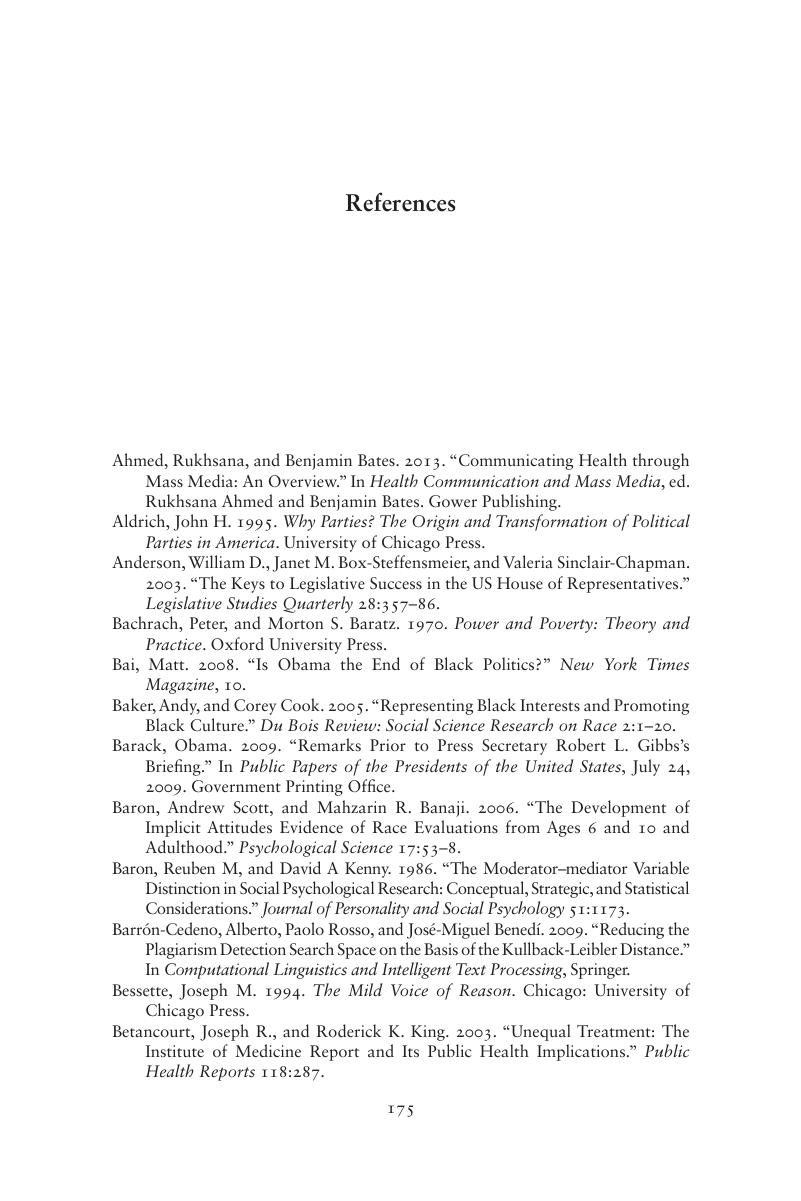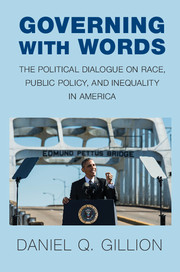Book contents
- Frontmatter
- Contents
- List of Figures
- List of Tables
- Acknowledgments
- Introduction
- 1 Discursive Governance: Toward a Holistic Approach to Understanding a Dialogue on Race in Government
- 2 Measuring the Political Dialogue on Race
- PART I Societal Reception to a Dialogue on Race
- PART II Political Institutions and a Dialogue on Race
- Conclusion: A Place for a Racial Dialogue in an Aspiring Post-Racial Society
- Appendix A Defining and Measuring Race-Related Statements
- Appendix B Study Description and Coding across Chapters
- Appendix C Wharton Behavioral Lab Experiments and the National Experiment
- Appendix D Method for Assessing the Overlap of Presidential Discussion and Minority Magazine Articles: Text Reuse (Plagiarism Analysis)
- References
- Index
- References
References
Published online by Cambridge University Press: 05 April 2016
- Frontmatter
- Contents
- List of Figures
- List of Tables
- Acknowledgments
- Introduction
- 1 Discursive Governance: Toward a Holistic Approach to Understanding a Dialogue on Race in Government
- 2 Measuring the Political Dialogue on Race
- PART I Societal Reception to a Dialogue on Race
- PART II Political Institutions and a Dialogue on Race
- Conclusion: A Place for a Racial Dialogue in an Aspiring Post-Racial Society
- Appendix A Defining and Measuring Race-Related Statements
- Appendix B Study Description and Coding across Chapters
- Appendix C Wharton Behavioral Lab Experiments and the National Experiment
- Appendix D Method for Assessing the Overlap of Presidential Discussion and Minority Magazine Articles: Text Reuse (Plagiarism Analysis)
- References
- Index
- References
Summary

- Type
- Chapter
- Information
- Governing with WordsThe Political Dialogue on Race, Public Policy, and Inequality in America, pp. 175 - 186Publisher: Cambridge University PressPrint publication year: 2016

